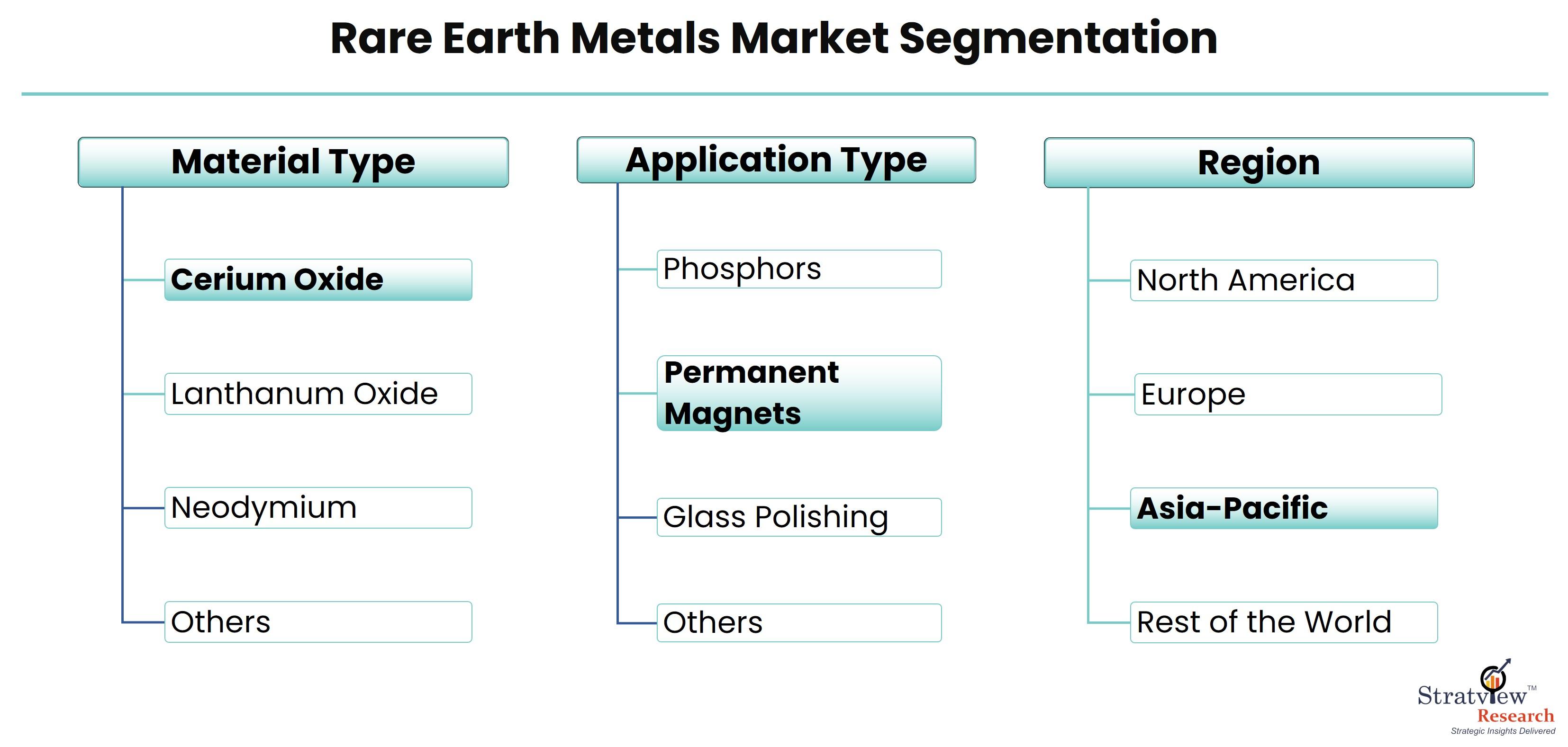Rare earth metals, a group of seventeen elements crucial to modern technology, are poised for significant growth and evolution in the coming years. These metals are integral to the production of high-tech devices ranging from smartphones to electric vehicles and renewable energy technologies. This article explores the anticipated market growth and the dynamic factors shaping the future of rare earth metals.
According to Stratview Research, the rare earth metals market was estimated at USD 5.84 billion in 2022 and is likely to grow at a CAGR of 12.42% during 2023-2028 to reach USD 11.78 billion in 2028.
Market Growth Drivers
1. Expanding Technological Applications
Rare earth metals are indispensable in advanced technological applications due to their unique magnetic, luminescent, and catalytic properties. The increasing adoption of electric vehicles (EVs), renewable energy systems, and smart devices is driving demand for rare earth metals. Neodymium, praseodymium, and dysprosium, used in magnets for EV motors and wind turbines, are particularly in high demand. As these technologies continue to proliferate globally, the demand for rare earth metals is expected to escalate.
2. Rising Environmental Awareness
The global shift towards sustainability and clean energy is accelerating the demand for rare earth metals. These metals play a critical role in technologies that facilitate energy efficiency and renewable energy generation. For instance, lanthanum and cerium are essential in catalysts for reducing emissions from internal combustion engines, contributing to cleaner air quality. As governments worldwide implement stringent environmental regulations, the demand for rare earth metals used in environmental technologies is set to rise.
3. Geopolitical Considerations
The geopolitical landscape significantly influences the rare earth metals market. China currently dominates global production and processing capabilities of rare earth metals, giving it substantial influence over global supply chains. Geopolitical tensions and trade disputes can disrupt supply, highlighting the importance of diversifying supply sources and securing strategic reserves in other regions. Countries and companies are exploring opportunities to develop rare earth mining projects outside of China to mitigate geopolitical risks.
Market Dynamics
1. Supply Chain Challenges
The rare earth metals market faces challenges related to the complexity of mining and processing these elements. Environmental concerns, regulatory requirements, and technological barriers contribute to supply chain uncertainties. Efforts are underway to enhance extraction technologies, improve recycling capabilities, and promote sustainable mining practices to ensure a stable and resilient supply of rare earth metals.
2. Technological Innovations
Advancements in technology are driving innovations in rare earth metals production and recycling. Research and development efforts focus on improving extraction efficiency, reducing environmental impacts, and enhancing the purity of rare earth metals. Innovations in recycling technologies are also gaining traction, offering opportunities to recover and reuse these valuable resources from electronic waste and industrial residues.
Conclusion
The future of the rare earth metals market is promising yet complex, characterized by growing demand from diverse technological applications, geopolitical dynamics, supply chain challenges, and technological innovations. Stakeholders in the industry must navigate these dynamics strategically to capitalize on growth opportunities while addressing environmental and geopolitical risks. By fostering innovation, promoting sustainable practices, and diversifying supply sources, the rare earth metals market can thrive and continue to support advancements in critical technologies essential for a sustainable future.


